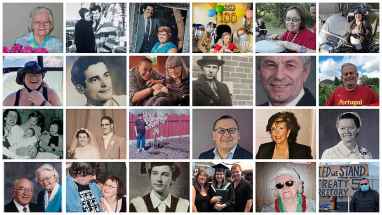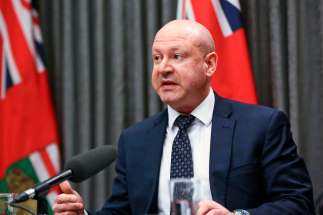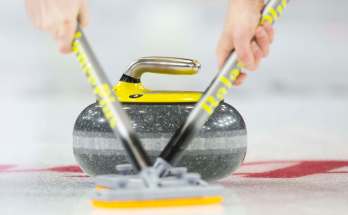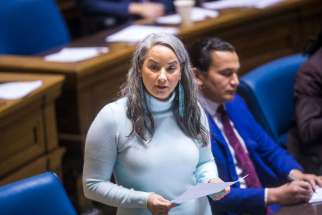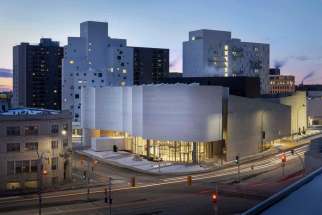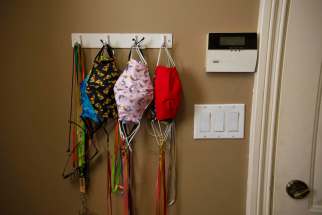Letting down my ‘gurd’ Familiar curling broadcast voices help to break the disquieting silence after a very strange year
Read this article for free:
or
Already have an account? Log in here »
To continue reading, please subscribe:
Monthly Digital Subscription
$0 for the first 4 weeks*
- Enjoy unlimited reading on winnipegfreepress.com
- Read the E-Edition, our digital replica newspaper
- Access News Break, our award-winning app
- Play interactive puzzles
*No charge for 4 weeks then price increases to the regular rate of $19.00 plus GST every four weeks. Offer available to new and qualified returning subscribers only. Cancel any time.
Monthly Digital Subscription
$4.75/week*
- Enjoy unlimited reading on winnipegfreepress.com
- Read the E-Edition, our digital replica newspaper
- Access News Break, our award-winning app
- Play interactive puzzles
*Billed as $19 plus GST every four weeks. Cancel any time.
To continue reading, please subscribe:
Add Free Press access to your Brandon Sun subscription for only an additional
$1 for the first 4 weeks*
*Your next subscription payment will increase by $1.00 and you will be charged $16.99 plus GST for four weeks. After four weeks, your payment will increase to $23.99 plus GST every four weeks.
Read unlimited articles for free today:
or
Already have an account? Log in here »
Hey there, time traveller!
This article was published 11/03/2021 (1745 days ago), so information in it may no longer be current.
Of all the little pleasures that ride on the edges of the Canadian men’s curling championship, outside the hits and draws and moments of gut-churning drama, one of the most consistent and underrated is listening to the way TSN analyst and 2006 Olympic champion Russ Howard says the word “guard.”
Let’s take a moment to appreciate the sound. In much of North America, at the heart of the word is what linguists describe as an open back rounded vowel: “back,” meaning the highest point of the tongue is near the back of the mouth; “rounded” to describe how the lips move to shape the emerging sound.
Yet in Howard’s mouth, and those of many of the curlers muttering about strategy in the Brier curling bubble hosted by Calgary this week, the word becomes a little different. Theirs is a regional vowel, distinctive, imbued with thick Canadian charm; one that announces more clearly than any flag or passport where the speaker is originally from.
So: “They just couldn’t get it by that guard,” Howard intones, the vowel narrowing and leaning hard into the “r” that follows, creating a sound that hovers closer to “gurd.” To American fans tuning into the Brier for the first time, these and other dialect quirks must stick out like a phonetic sore thumb; to me, they just sound like home.
And it’s been comforting, after 12 months of pandemic, after the squeeze and release of restrictions and relaxations, to hear these voices on TV, and their familiar patter. The events themselves are, of course, a little different: there are broom-taps instead of handshakes, cardboard cutouts instead of fans, Zoom calls instead of scrums.
But it’s still curling, which means it’s still the swish of brushes on pebble, the groan of sliding granite and the gleeful sound of those unfettered Canadian accents echoing down the sheet. Sinking into the national championship now feels like one of the most normal things that’s happened since the last Brier, and also a little like a dream.
It serves as a reminder, for instance, that the 2020 Brier marked the last normal major sporting event Canada had, before everything shut down. Just three days after Brad Gushue won the 2020 final, the World Health Organization declared a pandemic and the NBA scuttled its season; five days after that, the border was closed.

Yet I remember how, just days before the final, a colleague FaceTimed me from a Kingston bar so I could join in the Brier’s karaoke night from afar. I remember a blur of faces and voices. People shouting to be heard over the music. Friends leaning heads together to wave to the camera. The closeness of it all. The warmth.
That seemed normal then. It seemed fine. This is still the part of the pandemic I least understand, looking back, and the part on which I still take time to reflect. How did we not see the urgency of what was coming or what was already here? Here, I must be gentle: we’d never lived anything like it before, so we had no way of knowing.
Still, I wish I had recorded that call. If I were to build an evidentiary record of my pandemic — for as much as this has been a global crisis, everyone has lived their own — it would be one of the artifacts held near the start, a reminder of how fast life can turn, of how slow we can be to grasp the larger forces working on our world.
Curating COVID: artifacts sought for posterity
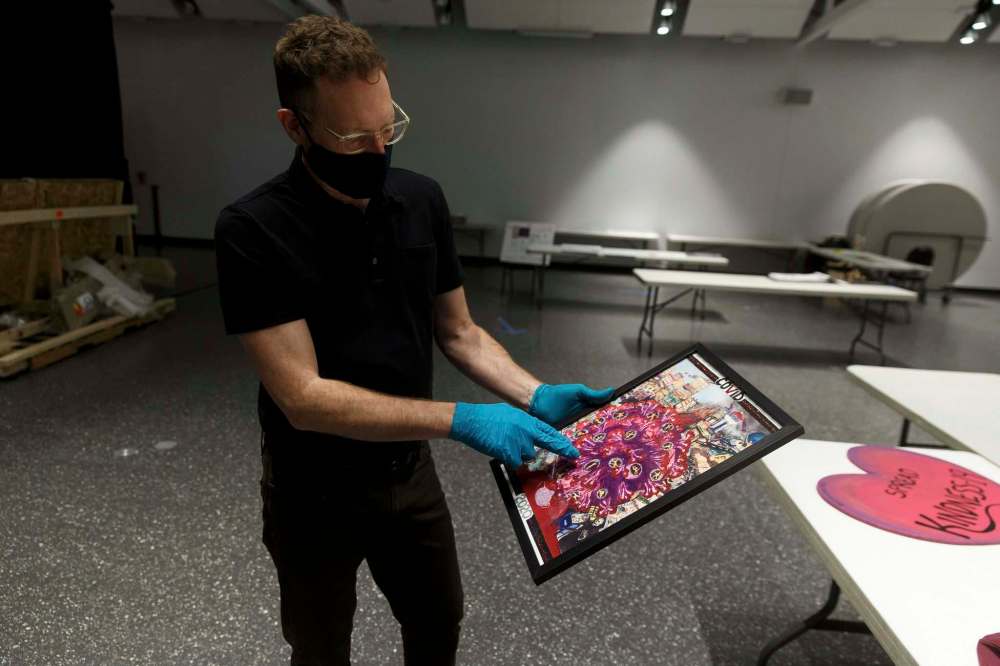
Posted:
Last March, Roland Sawatzky gazed out his office window at the Manitoba Museum. The province had just announced its first COVID-19 cases and, already, Sawatzky recognized history unfolding.
I thought of that again, this week, after colleague Jen Zoratti wrote the story of how the Manitoba Museum is putting out a call for artifacts of the pandemic. The idea is sweet, and a little poignant. What they’re looking for are the odds and ends of everyday life that defined a year (and counting) lived mostly at home and online.
So, among the artifacts they’ve collected: a tongue-in-cheek sweatshirt that reads “Social Distance Club,” made by one new mom and her friends. A scrap of paper marked in pen, used as a scoresheet for backgammon games played by one couple in lockdown. Pandemic-themed cartoons, drawn by a kid.
Curating these objects is a lovely idea, and also important. In the years ahead, the strain of the last 12 months will fade from view; we will never forget, but time will smooth the memories’ rough edges. It will paper over the ache of lonely nights, the tacit tension of long store lines or the dread that attended rising case numbers.
So in reading about the museum’s call for these things, I began to wander through my home, taking stock of what, if anything, I could donate to the cause. It was, I realized, easier said than done. The pandemic has left its mark on me and everything in my environment, and yet it’s hard to point to one object that captures it at all.
Are the dresses that hang in my closet, unworn, an artifact of the pandemic? How about a grease-spotted pizza box, acquired in cloistered weeks when my world had shrunk to the footprint of my condo and the motivation to cook had run off and vanished? What about the sheet hung in my office as a background for Zoom calls?
Other things that show how life shifted during COVID-19: a fresh stockpile of books, many unread, acquired during a fleeting burst of motivation to use pandemic-freed time on self-improvement. A disturbing number of reusable masks. A crumpled Manitoba Health pamphlet in the cup-holder of my car from when I took a COVID-19 test.
These are some of my own artifacts of the pandemic. They all tell a piece of the story of what it was like, but none of them get to the heart of it.
These are some of my own artifacts of the pandemic. They all tell a piece of the story of what it was like, but none of them get to the heart of it. The first year was a long journey, and though it will leave little physical trace in most of our homes, if we close our eyes we can see how it has affected us the most.
Maybe it will simply be that the meaning of most pandemic artifacts can be felt, but not seen.
Yet there is still more time to collect. A note jotting down a vaccine appointment, yes, that’s coming for all of us soon; and then, perhaps, a receipt from a night out in public with friends. Each day that passes and each needle in an arm brings us closer to the shore of what life had once been, and will be again.
For now, I flick on the TV and turn up the volume on the Brier, comforted by the prospect of more weeks of watching the curling hosted in the Calgary bubble; it will host four more events from now through to May. There are no fans in the stands, but the voices are the same; and right now, it’s comfort enough to hear some things haven’t changed.
melissa.martin@freepress.mb.ca
Our newsroom depends on a growing audience of readers to power our journalism. If you are not a paid reader, please consider becoming a subscriber.
Our newsroom depends on its audience of readers to power our journalism. Thank you for your support.


